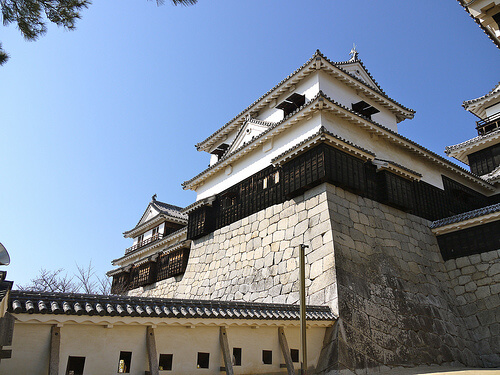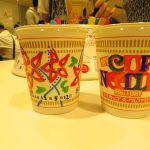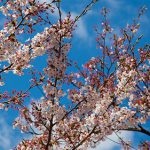Nestled south of Honshu in the Inland Sea, Shikoku is Japan’s fourth largest island. The name means “four provinces” after the ancient kingdoms based there and the island is still divided into four prefectures. Shikoku has a slow pace of life; it’s the perfect place to get back to nature and relax away from Japan’s hectic cities.
A Brief History of Shikoku
Despite being fairly close to Honshu, the barrier of the Inland Sea meant Shikoku avoided much of the turbulence of Japan’s early history. The occasional battle between warring clans disturbed the peace but otherwise Shikoku was left to its own devices. The island became a major centre for religious practice and is still a destination for modern pilgrims following a trail around 88 buddhist temples that circle the island.
Getting to Shikoku
Shikoku was connected to Honshu in 1989 by road and rail bridge, and two further road bridges have since been built. There are also several ferries that connect the island to both Honshu and Kyushu.
The only rail line from Honshu to Shikoku travels in to the north east of the island via the Seto-Ohashi line. Trains take around an hour to reach the main city of Takamatsu from Okayama on Honshu. From here, you can change on to the JR lines that circle the island, making getting about Shikoku very easy. There are a few private railway lines on the island as well, so be careful if you are traveling on a rail pass.
To explore the interior of the island a rental car offers the most flexibility but there are also several buses that travel to towns inland. You can buy a Shikoku Free Kippu which is valid on all JR trains and buses which might be a good alternative to a standard rail pass. If you are traveling by road then there are two alternatives routes to Shikoku from Honshu; via Kobe and Onomichi.
There are several ferry routes to Shikoku. Local ferries travel to the outlying islands that surround Shikoku, but major routes include Tokushima to Osaka, Matsuyama to Miyajima and Hiroshima, and Yawatahama to Beppu.
Finally, there are several small airports on the island which serve domestic flights around Japan. These are particularly useful if you are traveling to Shikoku from northern Honshu or Hokkaido.
Where to Stay in Shikoku
The main towns in Shikoku cluster around the northern coast, and these are home to the main tourist attractions. Staying in Matsuyama, Takamatsu or Tokushima is convenient for travel and they offer a good range of accommodation. Kochi is the only major town on the southern coast, and is notable for its castle and markets. However, the smaller towns and villages inland and on the southern coast are very picturesque and the pilgrimage route around the island means that accommodation is plentiful in most areas.
Must See Shikoku
Matsuyama Castle
Like many Japanese castle, Matsuyama-jo is a mishmash of original and reconstructed buildings and interiors. Building began in 1602 and the castle still enjoys great views over the Inland Sea and Matsuyama city. Once inside the castle, climb to the top of the donjon for the best view and try on Samurai armour in the small museum.

Ritsurin-koen
Located in Takamatsu, Ritsurin-koen is one of the largest formal gardens in Japan. Built by feudal lords in the 1600s, it took over a hundred years to complete the layout and planting. Highlights of the garden include the Kikugetsu-tei tea house (stop by for a cup of matcha for the full experience) and the ponds of the more naturalistic Hokutei garden.
Naoshima
A small island off the Takamatsu coast, Naoshima has beautiful scenery and several galleries that make it a must see for art lovers. Benesse House has stunning views over the Inland Sea accompanying a comprehensive collection of modern art, including an outdoor sculpture garden. There’s also the Art House Project at Honmura and the Chichu Art Museum to keep you busy. At Miyanoura you’ll find the I♥湯 bath house (pronounced I Love You, as ‘yu’ means hot water in Japanese) which follows the arty theme, with detailed mosaics and pop art paintings decorating the walls.
Iya Valley
To fully explore the Iya Valley, you’ll need a car or bike as trains and buses are limited. Learn about local crafts in preserved traditional houses and marvel at the mountainous scenery complete with picturesque cable bridges across the river. For real thrillseekers, organise a white-water rafting trip down the Yoshino-gawa.
Shikoku Pilgrimmage
This trail covers 1400km around Shikoku visiting 88 temples on the way. The 88 temples represent the 88 evils that affect human life, and the trail offers a chance for pilgrims to forget their normal worries and concentrate on reconnecting with their spirituality. Pilgrims are easily recognised by their traditional white jackets and broad straw hats. Check out the first (Ryozen-ji) and last (Okubo-ji) temples to get a flavour of the pilgrimage without walking the full route.
Find out more about Shikoku on their official tourism website.







